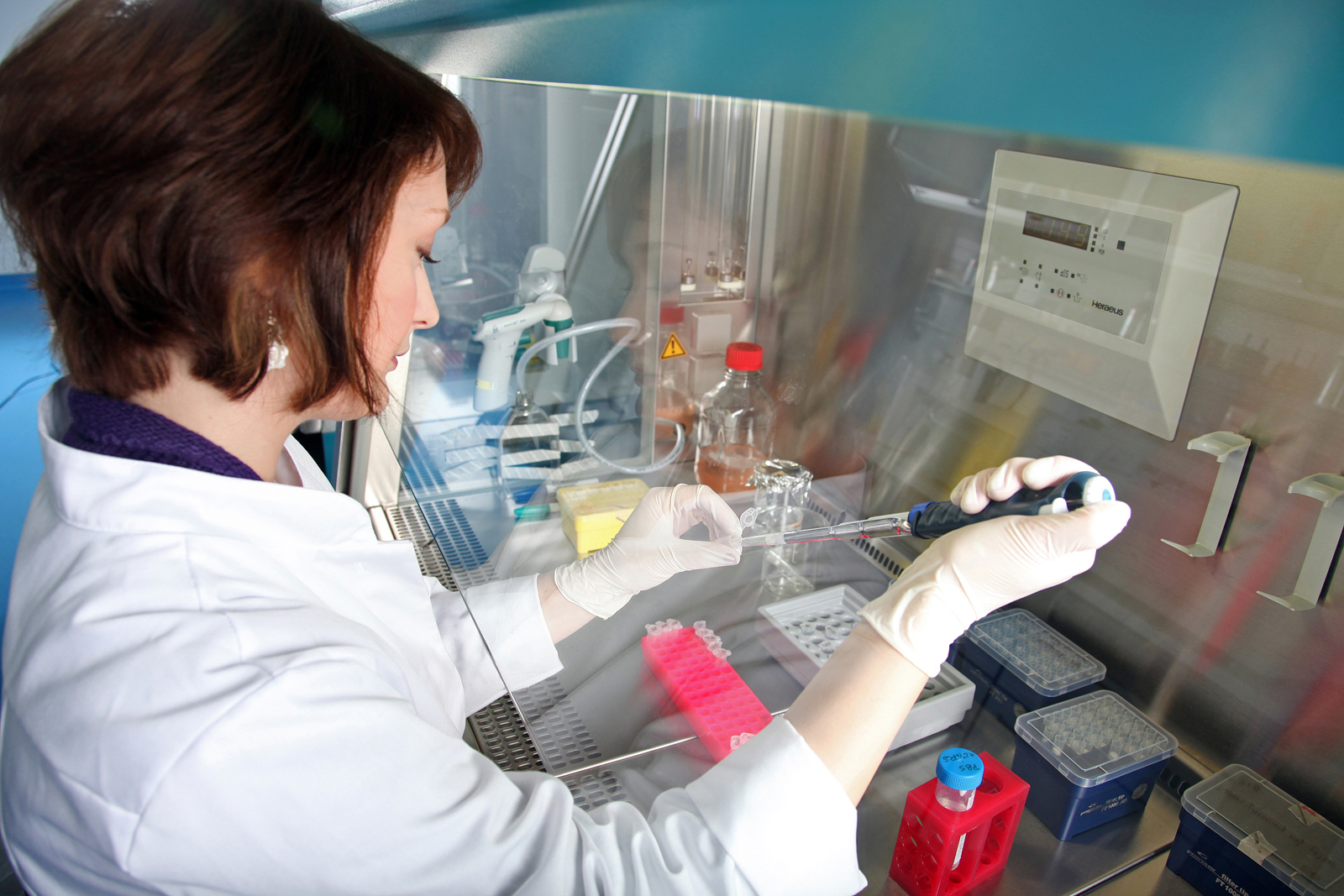Promising stem cell therapy for leukemia patients
Leukemia patients receive a bone marrow transplant, which allows them to build a “new” immune system. However, this immune system not only attacks cancer cells but healthy tissue too. Special antibodies will be used to protect healthy tissue in future.
Not too long ago, leukemia left us with no chance. Today doctors can give patients hope by transplanting bone marrow, the starting point of a “new” immune system. These transplanted cells replace the diseased, blood-building stem cells in the bone marrow and take over their job of producing healthy blood cells, while also destroying leukemia cells. The problem is that this immune system originates from a foreign body and therefore can also attack healthy tissue in the patient. The skin, liver, and intestine are most affected by these attacks – their cells can be destroyed and the organs damaged, sometimes so severely as to cause organ failure. The medical term for this phenomenon is graft-versus-host disease (GvHD), and the scale of the problem posed by this misdirected immune response is illustrated by statistics revealing that up to 50 percent of all patients ultimately suffer from GvHD-induced damage; in up to 20 percent of cases this damage is fatal. Not to ignore the further risk: that one in five leukemia patients suffer a relapse after the transplant.
In order to combat the cancer effectively, doctors give leukemia patients chemotherapy and radiation therapy before the transplant. These treatments destroy the patient’s entire blood-building system, creating space for the donor’s healthy cells. Any cancer cells that might survive this treatment are identified and destroyed by the new immune cells. So that the “foreign” immune system does not turn against healthy tissue, doctors additionally give patients immunosuppressants to artificially suppress the immune system. There is a fine balance to be struck here, as immunosuppressants not only inhibit GvHD but also the desired immune response, i.e. killing off the cancer cells.
Minimizing the risk of a misdirected immune reaction
Researchers at the Fraunhofer Institute for Cell Therapy and Immunology IZI in Leipzig are investigating how to improve the situation for leukemia sufferers. “Our goal is to avoid GvHD without changing how the new immune effect acts on the tumor,” says Dr. Stephan Fricke, head of the Immune Tolerance unit at the IZI and doctor at the Department of Hematology and Oncology, University Hospital Leipzig. “Our hopes are pinned on monoclonal antibodies, which specifically bind to the surface of immune cells and prevent the immune cells reacting adversely with the patient’s tissue.” It’s particularly important that the antibodies also act on the blood stem cells to be transplanted and on all immune cells that develop from them. This allows researchers to modulate the cells in advance of transplantation, causing them to “tolerate” the patient’s healthy tissue instead of attacking it. “We’re then able to effectively reduce the risk of a GvHD without any side effects,” explains Fricke. The antibodies do not alter the immune response against remaining cancer cells – they are still destroyed as before. This reduces the risk of leukemia coming back after the transplant.
IZI scientists are currently collaborating with their colleagues from the Translational Centre for Regenerative Medicine at the Universität Leipzig on research into the cellular foundations of these effects. What is the optimum point at which to add the antibodies to the donor bone marrow? How many antibodies should be used? Setting out to answer these questions, researchers first simulate both GvHD and the human immune system using a variety of established models. They can then determine all relevant parameters based on the simulations.
The researchers have already provided proof of principle, i.e. they were able to demonstrate that the therapy works. Now initial tests are underway on mice with a human immune system. The scientists hope that a clinical study can begin before the year is out.
